This step by step diy project is about simple cat house with insulation plans. This is my latest take on a super simple cat house with insulation. I want to build this for my pet so I thought it would be a good idea to share this with you guys. This is a simple shelter that is built on a 2×2 structure and it features extruded polystyrene insulation to keep the pet warn during the hot winter nights. Take a look over the rest of my woodworking plans, if you want to get more building inspiration.
When buying the lumber, you should select the planks with great care, making sure they are straight and without any visible flaws (cracks, knots, twists, decay). Investing in cedar or other weather resistant lumber is a good idea, as it will pay off on the long run. Use a spirit level to plumb and align the components, before inserting the galvanized screws, otherwise the project won’t have a symmetrical look. If you have all the materials and tools required for the project, you could get the job done in about a day. See all my Premium Plans HERE.
Projects made from these plans
Simple Insulated Cat House Plans
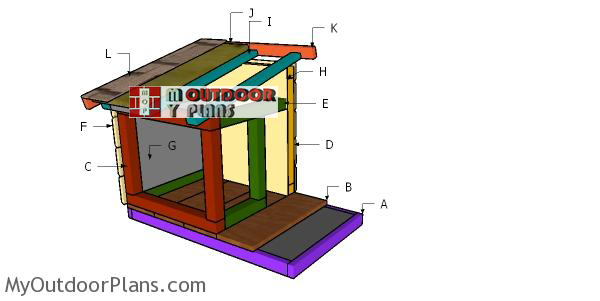
Building-an-insulated-cat-house
Cut & Shopping Lists
- A – 2 pieces of 1×2 lumber – 26″ long, 2 pieces – 16″ long FRAME
- B – 5 pieces of 5/8″ decking boards – 16″ long FLOOR
- C – 2 pieces of 2×2 lumber – 16 1/2″ long, 2 pieces – 11″ long SIDE WALL
- D – 2 pieces of 2×2 lumber – 16 1/2″ long, 2 pieces – 15″ long SIDE WALL
- E – 3 pieces of 2×2 lumber – 13″ long, 1 piece – 11″ long, 1 piece – 8″ long FRONT & BACK WALL
- F – 4 pieces of 1×4 tongue and groove slats – 8 ft EXTERIOR WALLS
- G – 4 pieces of 1 1/2″ polystyrene sheets – 24″x48″ INSULATION
- H – 1 piece of 1/4″ plywood – 13″x14″ long, 1 piece – 14 3/4″x18″ long, 2 pieces – 13″x18 3/4″ long INTERIOR WALLS
- I – 3 pieces of 1×3 lumber – 20 1/2″ long RAFTERS
- J – 1 piece of 3/4″ plywood – 20 1/2″x20 1/2″ long ROOF
- K – 2 pieces of 1×2 lumber – 22″ long, 2 pieces – 20 1/2″ long TRIMS
- L – 4 sq ft of asphalt shingles ROOFING
- 2 pieces of 1×2 lumber – 8′
- 1 piece of 5/8″ decking – 8′
- 2 pieces of 2×2 lumber – 8′
- 4 pieces of 1×4 tongue and groove slats – 8 ft
- 1 piece of 1×3 lumber – 8′
- 1 piece of 3/4″ plywood – 2’x2′
- 1 piece of 1/4″ plywood – 4’x4′
- 4 pieces of 1 1/2″ extruded polystyrene foam sheets
- 4 sq ft of asphalt shingles
- 1 1/2″ brad nails, 2 1/2″ screws, 1 5/8″ screws
- wood filler , wood glue, stain/paint
Tools
![]() Hammer, Tape measure, Framing square, Level
Hammer, Tape measure, Framing square, Level
![]() Miter saw, Drill machinery, Screwdriver, Sander
Miter saw, Drill machinery, Screwdriver, Sander
Time
Related
Building a cat house with insulation
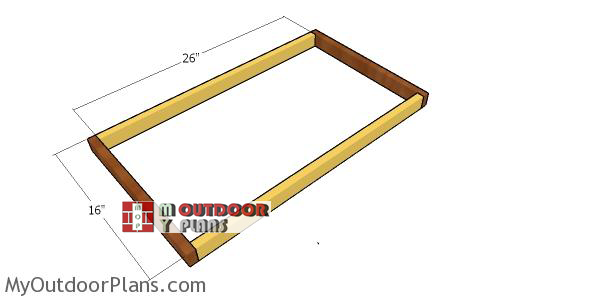
Floor-frame-for-the-cat-house
The first step of the project is to build the frame for the floor. Cut the components from 1×2 lumber, using the information from the diagram. Drill pilot holes through the end components and insert 1 5/8″ screws to assemble the frame together tightly. Check if the corners are square and align the edges flush.
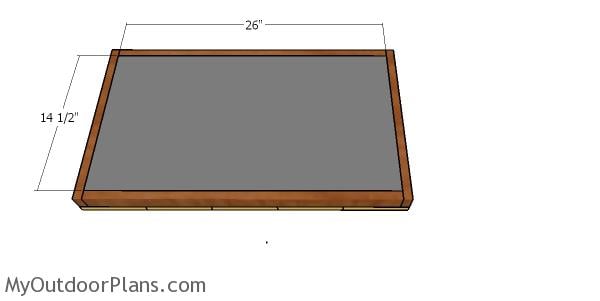
Cat house floor insulation
Fit 1 1/2″ polystyrene foam sheets between the frame of the floor, as shown in the diagram. Make sure you fit several layers of the polystyrene, as a better thickness will ensure a better insulation for the floor of the cat house.

Floor boards for the cat house
Next, use 5/8″ decking boards for the floor of the cat house. Cut the boards at 16″ long and then lay them to the frame. Leave no gaps between the slats, drill pilot holes and insert 1 5/8″” screws to lock the boards into place tightly.
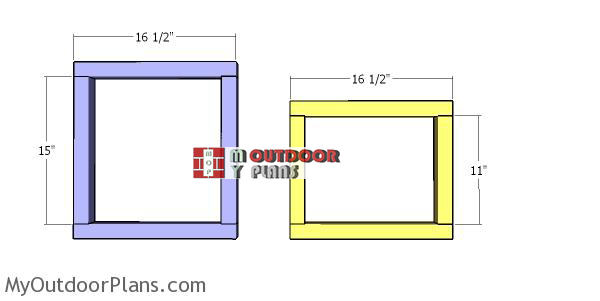
Side-wall-frames—cat-house
Build the side walls for the cat house using 2×2 lumber. Drill pilot holes through the plates and insert 2 1/2″ screws to lock everything tightly. Add glue to the joints and make sure the corners are square.
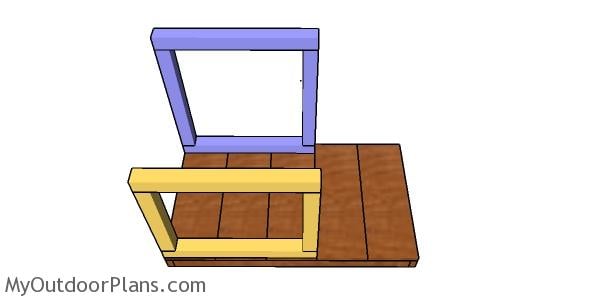
Fitting the side wall for the cat house
Fit the wall frames to the floor of the insulated cat house, as shown in the plans. Drill pilot holes through the bottom plates and insert 2 1/2″ screws into the floor. Plumb the walls with a spirit level for a professional result.

Back wall supports for the cat house
Next, attach the 2×2 supports for the back wall. Drill pocket holes at both ends of the supports and insert 2 1/2″ screws to lock them into place tightly.

Front wall frame – cat house with insulation
Frame the front wall for the cat house in the same manner described above. You can adjust the size of the door opening to suit your needs.
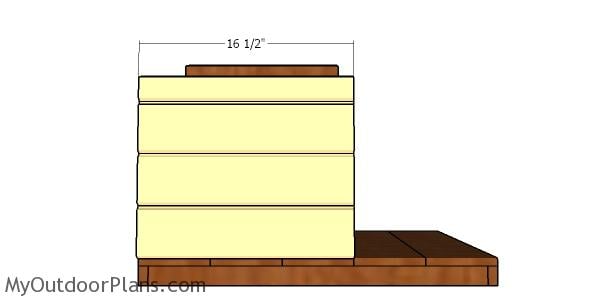
Fitting the slats to the sides of the cat house
Attach the tongue and groove slats to the sides of the cat house. Use finish nails to attach the slats to the frame of the cat house.
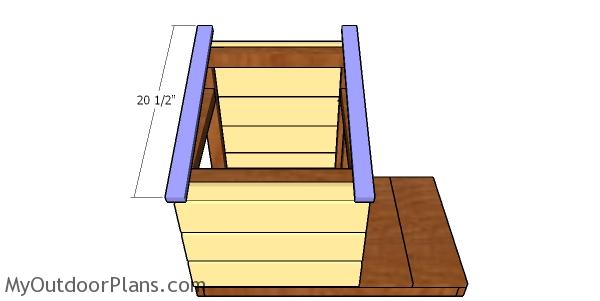
Fitting the rafters to the cat house
Attach the 1×3 rafters to the top of the cat house. Drill pilot holes and insert 1 5/8″ screws to secure them into place tightly.

Front slats for the cat house
Attach the tongue and groove slats to the front and back of the cat shelter, as shown in the diagram. Make sure you fit the slats around the door opening.
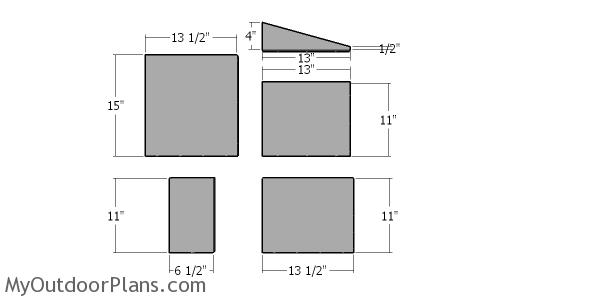
Insulation sheets for the walls
Use 1 1/2″ extruded polystyrene for the wall insulation. Use a saw to cut the panels at the dimensions shown in the diagram.
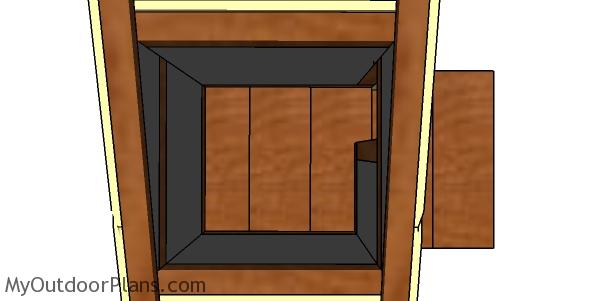
Fitting the interior insulation sheets to the cat house
Fit the insulation sheets into the wall frames. If you cut them as shown in the diagram, they will fit in properly.
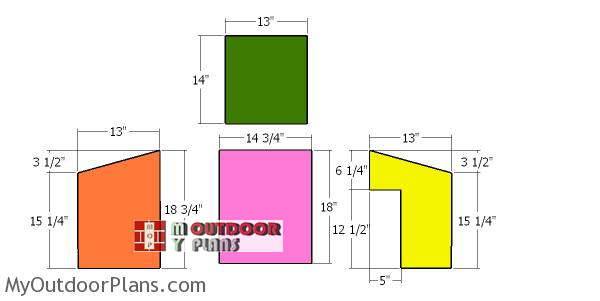
Interior-wall-faces
You can use 1/4″ plywood or tongue and groove boards for the interior walls. Using the plywood will make the job a lot faster, so I suggest you to choose this route. Mark the cut lines on the plywood sheet and get the job done with a circular saw.

Interior wall panels for cat house
Fit the panels to the front and back of the cat shelter. Use finish nails to secure the panels to the frame of the structure.

Fitting the interior wall panels
Attach the plywood panels to the sides of the cat house.
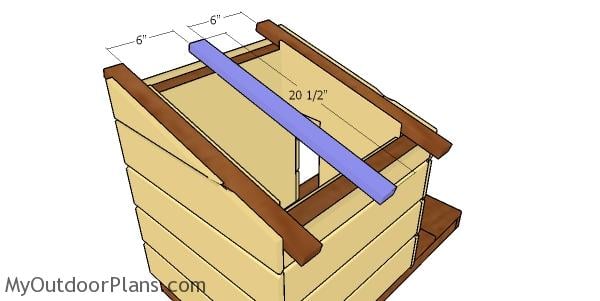
Fitting the rafters
Fit the middle rafter to the cat house, drill pilot holes and insert 1 5/8″ screws to lock them into place.
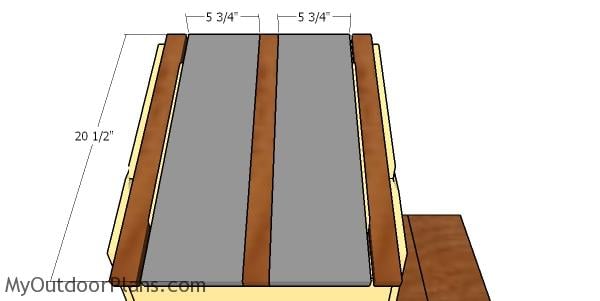
Fitting the roof insulation
Fit the insulation sheets between the rafters of the cat house.
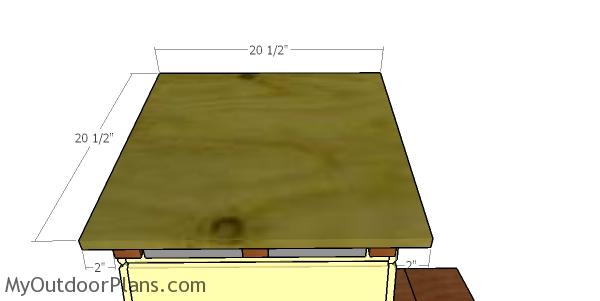
Fitting the roof sheet to the cat house
Use 1/2″ or 3/4″ plywood for the roof of the cat house. Center the panel to the rafters so that you have equal overhangs on both sides of the roof. Drill pilot holes and insert 1 5/8″ screws to lock it into place tightly.
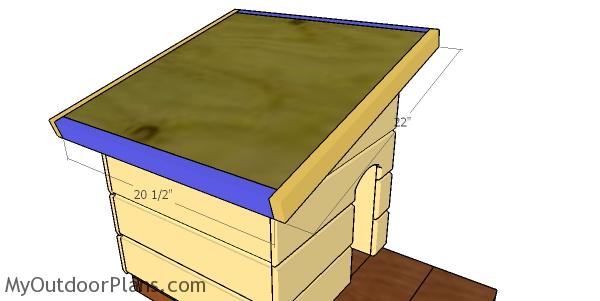
Fitting the roof trims
Use 1×2 lumber for the roof trims. Cut them as shown in the diagram, drill pilot holes and insert 2″ nails to secure them into place. Make sure you leave no gaps between the trims and align the edges flush.
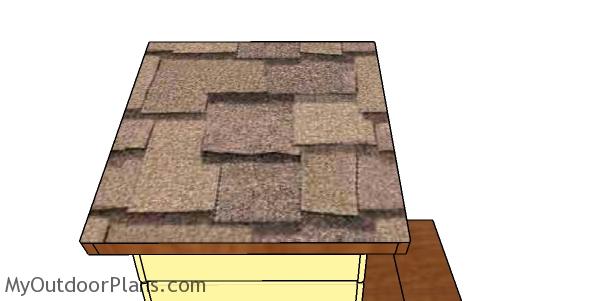
Fitting the roofing to the insulated cat house
Cover the roof of the cat house with asphalt shingles.

Insulated cat house plans – back view
Apply a few coats of stain or paint to the exterior of the cat house to protect the components from the elements and to make it look nice and match the style of the rest of your garden.
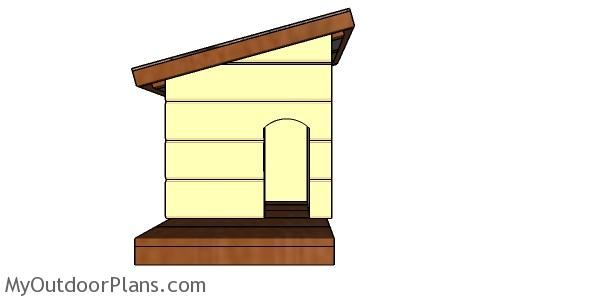
Insulated cat house plans – front view
I am sure you favorite furry pet will love this home, because it has been designed with a lot of love. The construction is simple so you can make one with basic tools and materials.
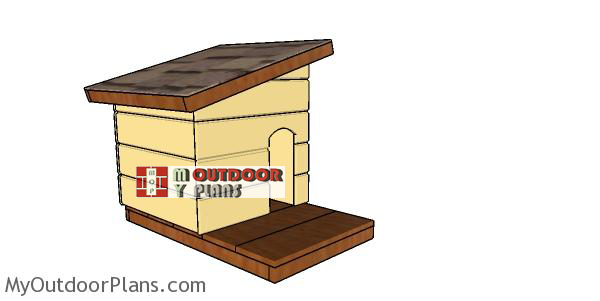
Insulated-cat-house-plans
The basic box structure and the lean to roof make this insulated cat house easy to build and cost friendly. I have lots of other cat house designs on this blog so make sure you take a look over the rest of them HERE. Moreover, I have more than 1000+ free woodworking plans on this blog which you can see all HERE.
This woodworking project was about insulated cat house plans free. If you want to see more outdoor plans, check out the rest of our step by step projects and follow the instructions to obtain a professional result. If you build this cat house let me know and I will be more than glad to highlight your work! You can build and You can inspire others!
